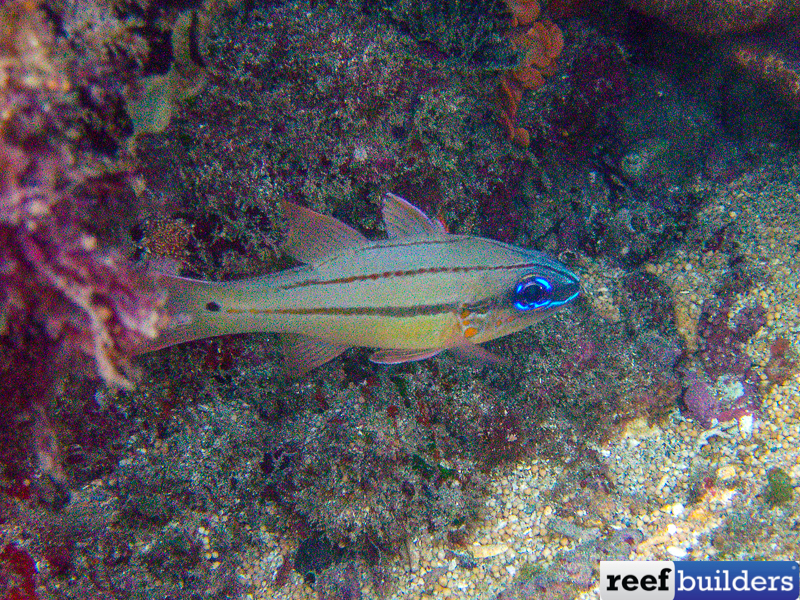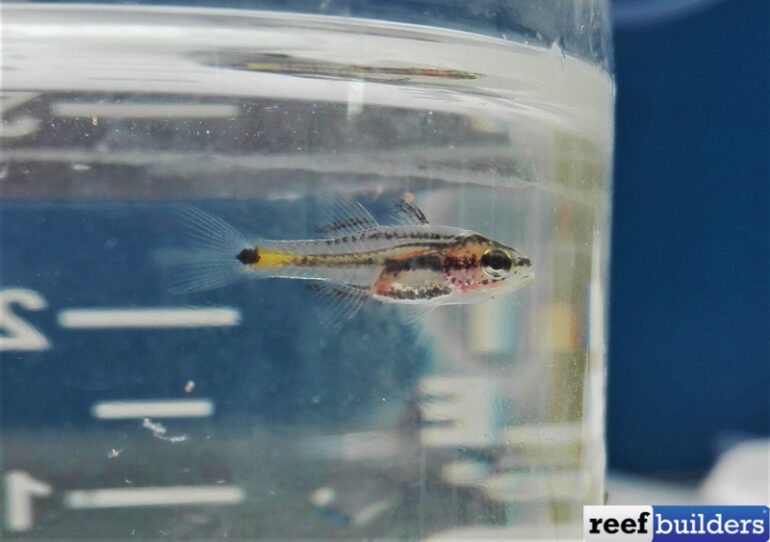The Spotted-Gill Cardinalfish, Ostorhinchus chrysopomus, is not the most sexy, exotic fish for us Reef Tank Keepers. But I will disagree with this statement for few reasons: cardinalfish are nocturnal and live in schools, so they are a very attractive display, and a very important educational fish for public aquariums to teach about fish schooling and about diurnal shift on the reef.
And the second reason the spotted gill cardinalfish is a good breed, is because juveniles school quietly among corals all day long, they are a very good coral feeder. They poop all day long right on top of corals, delivering food right on the coral’s front door. So they could be the perfect coral-farming associated fish, but they are also voracious nocturnal micro predator, that will feed on many crustaceans and other small fishes.

Oceanopolis from Brest in North-east of France on the Atlantic side, is starting a new Captive Breeding program for reef fishes. It was decided at the UCA (French Union of Aquarium Curators) that all public aquarium in France will start such a program to help develop aquarium fish captive breeding.
Since the beginning of the year, they started working on this new goal and started to target some species for this program. The first one to get through is the Spotted-gill Cardinalfish. At this point 2 batches of juveniles are over 2 months old, with over 140 fish and several larval batch are also in line.
Download Cardinalfishes of the World by Rudie Kuiter for Free
Two pairs of Spotted-Gill Cardinalfish were installed end of last year, in a 600 l (150 gl) tank with a sand layer and some flower pots. An egg/larva collector was used on the overflow and it only took a couple of month before they started spawning. Males are in charge of mouthbrooding, for around 10 days after which larvae are around 3.4 mm long, and are very active and feed on first day, to reach 4.5 mm the fourth day. They are fed with enriched rotifers and copepods (Acartia tonsa), then with Artemia nauplii. After 30 days, they are moved to the growing system.
Hope this will inspire other to produce this fairly easy and interesting species. This could be achieve by a lot of our hobbyist. This work was the fruit of the whole Oceanopolis team, but the main reward goes to Yann Leblain and Geoffroy Chancerelle. A great thank you to C-feed for their help with live food. A lot of other species are in the pipes, so stay tuned for more news about captive breeding in the next few months.





